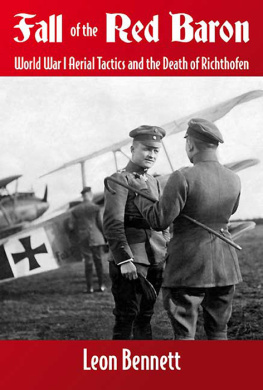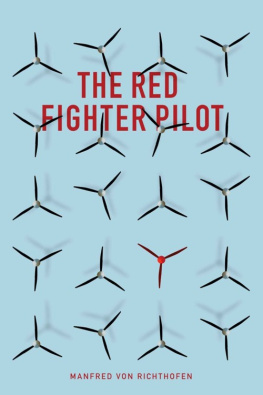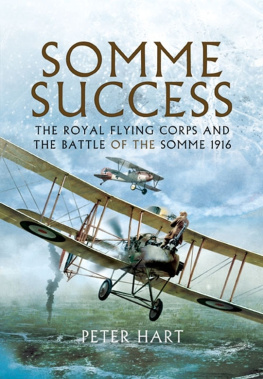Published by
Grub Street
4 Rainham Close
London
SW11 6SS
Copyright Grub Street 2016
Copyright text R.G. Head 2016
A CIP record for this title is available from the British Library
ISBN-13: 9-781-910690-23-9
eISBN-13: 9-781-910690-66-6
Mobi ISBN-13: 9-781-910690-66-6
All rights reserved. No part of this publication may be reproduced, stored in a retrieval system, or transmitted in any form or by any means electronic, mechanical, photocopying, recording or otherwise, without the prior permission of the copyright owner.
P ROLOGUE
Early in the morning on a cold and bleak January day in 1916, Oswald Boelcke, a German pilot, takes off from eastern France and climbs toward the front. He is in search of two English planes that had been reported to his base. After ten minutes of cruising in the bitter cold, he sees distant specks. Soon they morph into forms of aircraft heading home. As Boelcke gets closer, he recognises the machines as English reconnaissance biplanes.
Instinctively Boelcke checks his guns and closes on the rear aircraft from its blind spot. Now! He squeezes the two triggers, and the English machine is riddled from stem to stern. The pilot banks suddenly and tries to dive away to no avail. Boelcke is still there, firing at every turn. The Englishmans controls are hit. He begins to descend in barely controllable flight, still behind German lines. Thousands of feet below, the pilot of the disabled aircraft manages to lift the nose, but not enough to avoid a complete crash into the frozen German-held French soil. Both crewmembers survive.
The German pilot, Ltn Boelcke, follows the English plane down and lands nearby. He runs to the crash site and finds the enemy machine surrounded by a crowd from the nearby French village.

Oswald Boelcke inspects his seventh victim. (Michael Seamark, Mail Online , 26 November 2012, BNPS by permission)
Boelcke recalled later in a letter to his parents:
I went straight up to the Englishmen, shook hands with them and told them I was delighted to have brought them down alive. I had a long talk with the pilot, who spoke German very well. When he heard my name, he said with a grin, We all know about today the pilot had already been sent off and brought him some English papers and photos of his wrecked machine.
Ltn Boelcke asked the English observer, Lieutenant Formilli, if there was anything he could do to help him. Yes, replied Formilli, who then wrote a letter to his squadron commander to tell his mates that he and his pilot were alive and being looked after. Boelcke took the letter, and the next day, he risked his own life by flying low over the English aerodrome. He dropped the letter to the Royal Flying Corps and returned safely.
The German pilot, Leutnant Oswald Boelcke, was 24 years old, and this was his seventh victory, 5 January 1916. The English pilot was Second Lieutenant William E. Somervill, Royal North Lancers, and the observer was Lieutenant Geoffrey C. Formilli, Royal Garrison Artillery, from 2nd Squadron, Royal Flying Corps (RFC).
Boelcke was flying his Fokker E.IV monoplane, and the English crew was flying their B.E.2C reconnaissance aircraft. Lieutenant Formilli wrote the letter to Captain Babington of the RFC. The letter read:
P.S. It was Boelcke who brought us down.
My Dear Babington, just a line to say that Somervill and I are all right. We had a scrap with a Fokker. Willy got a graze on the side of his head and I got one through the shoulder, halfway through. We had most of our controls shot through and had to land and crashed very badly. I am in hospital now & Willy is in Germany. Will you let my people know please.
Yours , G. C. Formilli

Lieutenant Formillis letter, 5 January 1916, to his friend, Babington, 2nd Squadron, RFC. (Michael Seamark, Mail Online, 26 November 2012, BNPS by permission)
The squadron commander drafted a letter to Formillis parents and enclosed their sons letter. The commander wrote:
With your sons note came another from a pilot lost on the same day to say he is undamaged: his engine stopped after being hit. Boelcke is a rather famous German pilot. This news has given us all great pleasure, and I rejoice to be able to send it on to you. I hope that you have almost by now got a telegraph for I phoned to the Flying Corps Headquarters and asked them to let you know.
Yours sincerely
C. F. Murphy
The observer is a crew position in a biplane. He was usually an artillery officer whose job it was to locate and map the positions of enemy guns.
ACKNOWLEDGMENTS
The author is indebted to the large number of people who helped with this project. General Ron Fogleman, graduate of the USAFA Class of 1963 and former Chief of Staff of the USAF, wrote the foreword and provided excellent advice. Colonel Gert Overhoff, former commander of Tactical Air Force Wing 31 Boelcke, and president of the Boelcke Tradition Association, wrote the afterword and added his personal insight into the legacy of Oswald Boelcke in the Luftwaffe. Colonel Stefan Kleinheyer, commander of Tactical Air Force Wing 31 Boelcke, hosted our group and reaffirmed the enduring legacy of Oswald Boelcke. Heinz-Michael Raby, member of the Boelcke Tradition Association became a personal friend and was an immensely valuable co-conspirator in the research surrounding the building of the six-foot model of Oswald Boelckes Albatros D.II aircraft. Our exchange of Boelcke information and research continued into several presentations the author made to audiences in California and the preparation of the books manuscript.
Admiral Bud Edney was one of the early reviewers and provided invaluable advice on the manuscript. Walter Waiss shared his Boelcke artefacts and provided the Fokker logbook. Norman Franks, noted World War I aviation expert and author, read several sections and provided an introduction to Grub Street. John Davies at Grub Street was a gracious host and wonderful editor of the work. Natalie Parker was the untiring military editor at Grub Street. Tom Leary read each of the drafts and provided numerous suggestions that were both helpful and timely. Virginia Andersen read the final manuscript and provided unique insight. Howard Fisher, World War I expert and curator, provided advice and access to his voluminous library of WWI original material. Brigadier General Mark Wells, retired professor and head, department of History at the USAF Academy, and a World War I expert, took a personal interest in the manuscript and assisted with professional advice and assistance. Charles D. Dusch, Jr., Deputy Command Historian for the Air Force Academy read one of the early drafts and provided a host of valuable comments and suggestions. Kai Erdmann translated important letters and other artefacts to and from the German language.


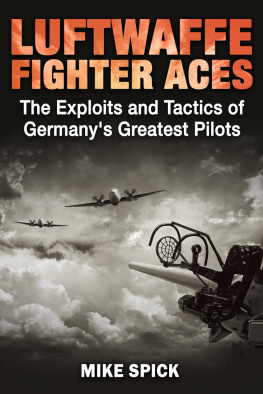
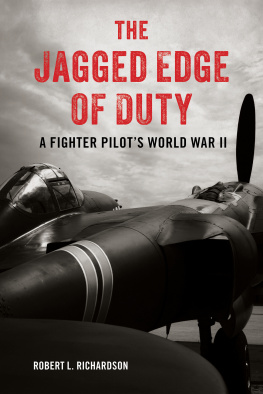
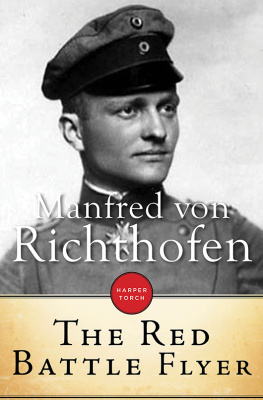
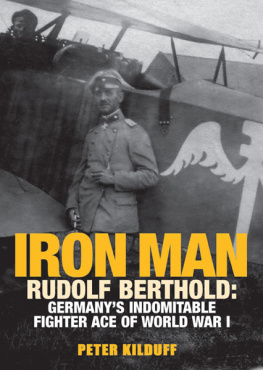
![Bar Wing Commander Guy P. Gibson VC DSO - Enemy Coast Ahead [Illustrated Edition]](/uploads/posts/book/180257/thumbs/bar-wing-commander-guy-p-gibson-vc-dso-enemy.jpg)
